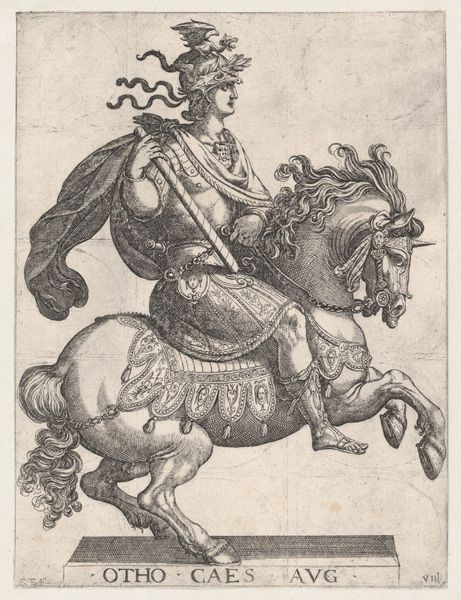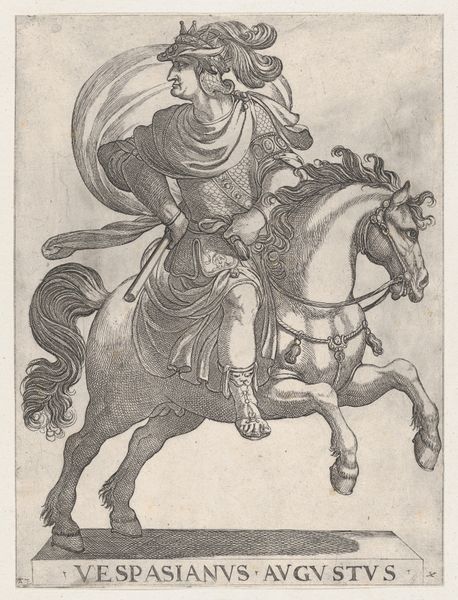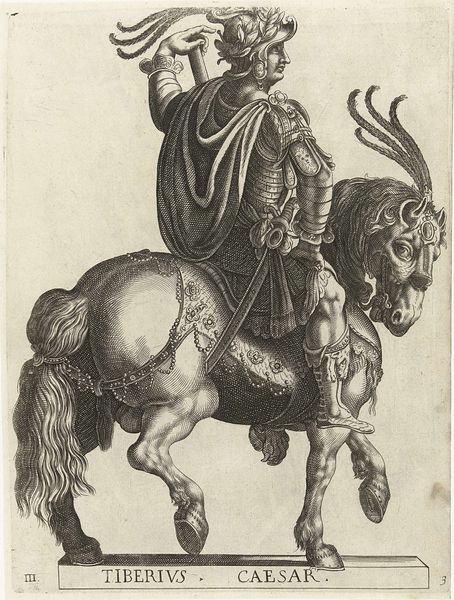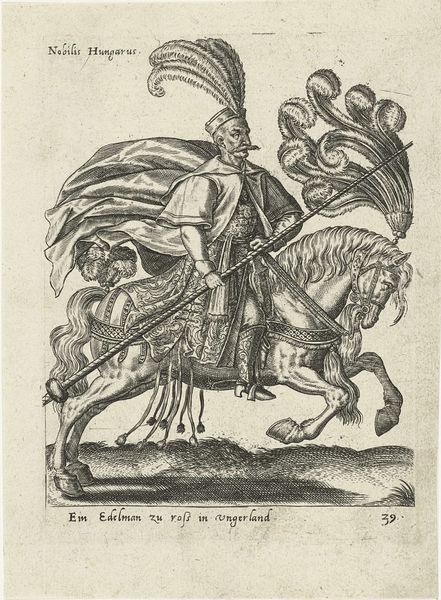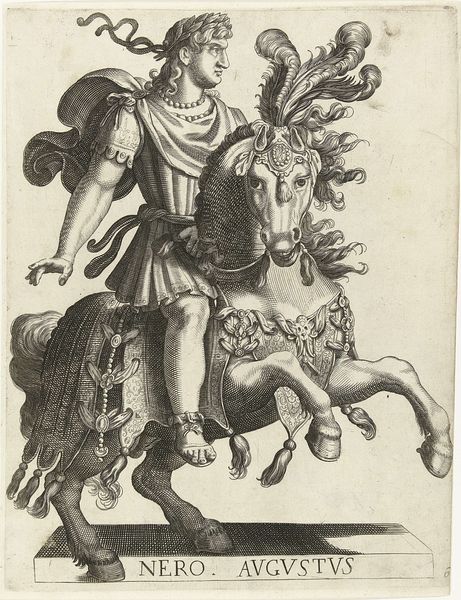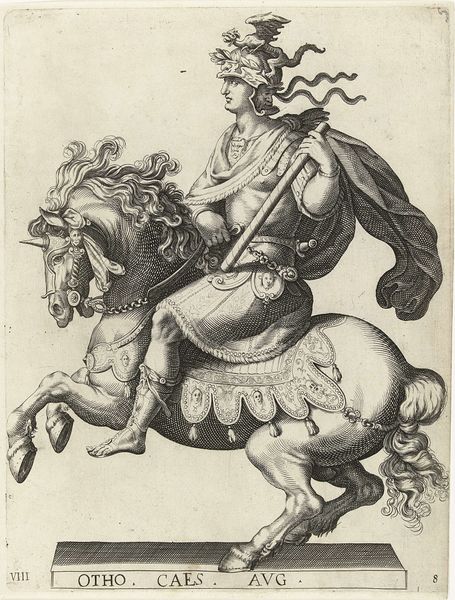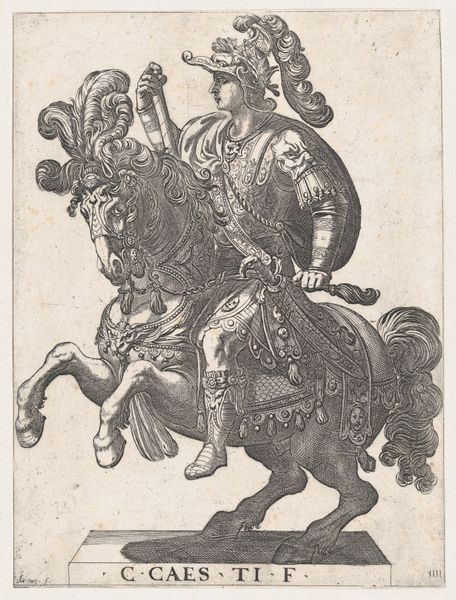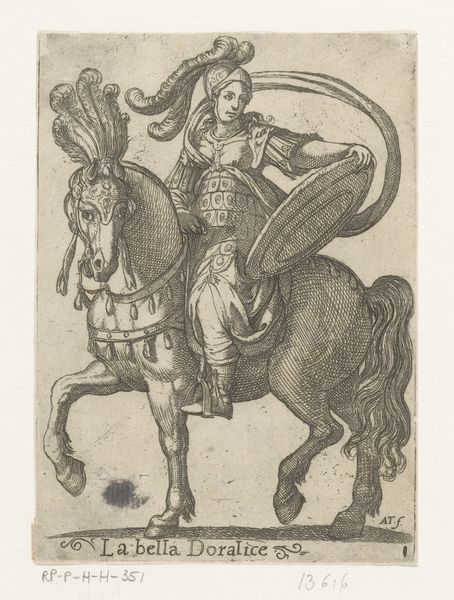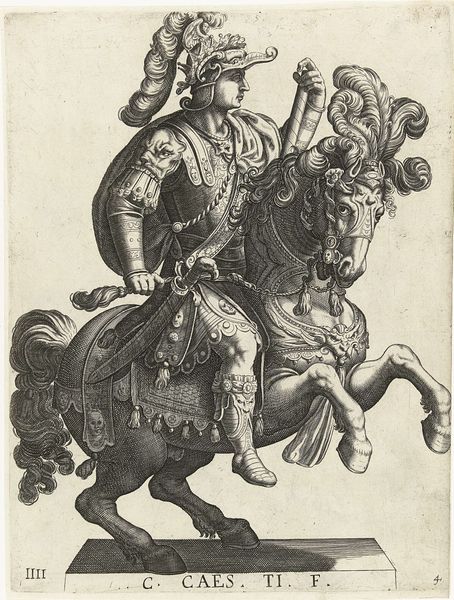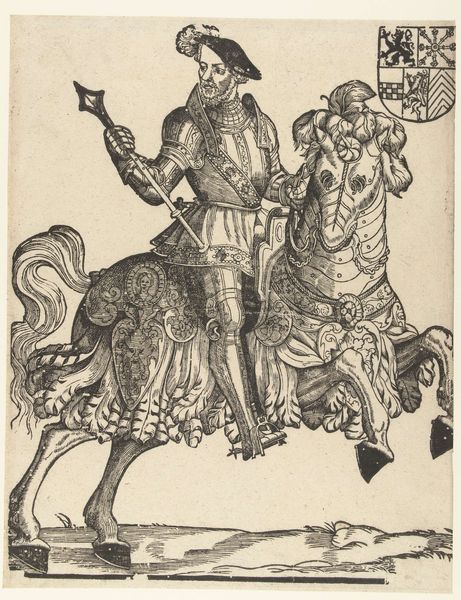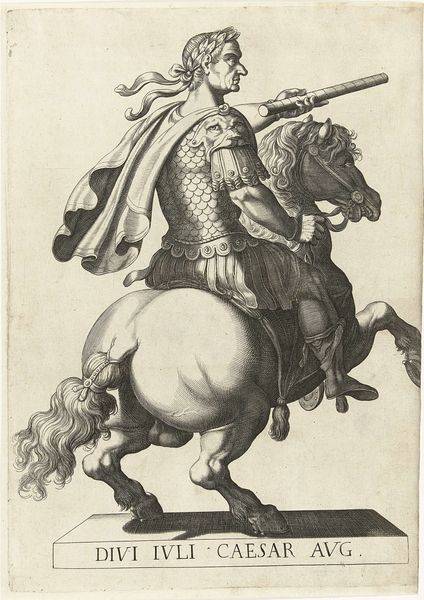
Plate 6: Emperor Nero on Horseback, from ' The First Twelve Roman Caesars' 1596
0:00
0:00
drawing, print, engraving
#
portrait
#
drawing
# print
#
figuration
#
romanesque
#
horse
#
pen work
#
history-painting
#
engraving
Dimensions: Sheet: 11 7/8 × 8 7/8 in. (30.1 × 22.6 cm)
Copyright: Public Domain
Curator: Standing before us is "Plate 6: Emperor Nero on Horseback, from 'The First Twelve Roman Caesars'" crafted in 1596 by Antonio Tempesta. This engraving showcases Nero regally mounted on horseback. Editor: My first impression is dominated by the overwhelming detail. The dense linework creates such elaborate textures across Nero’s clothing and the horse’s ornamentation. The plumes and tassels are so extravagant. Curator: Indeed, Tempesta’s technique underscores the opulence and authority associated with Nero, even if history paints a more complex and critical picture. This piece allows us to consider the power dynamics between rulers and artists who create and disseminate these idealized representations. How does this image serve political ends? What stories get obscured? Editor: Structurally, the composition feels rather static. Nero is almost doll-like atop this robust horse, despite all the linear activity. It seems less about capturing movement, and more about presenting symbols—status, dominion. Curator: Considering Rome as a deeply patriarchal society is paramount here, and its echoes through European culture up until today. Nero, for many feminist scholars, stands as a complex and contradictory figure—his flamboyance often pathologized in gendered ways, contributing to his image as "mad" and excessive. The power of the figure in relation to its image-making... that is potent. Editor: The horse itself seems more dynamic than Nero; all that carefully etched musculature implying energy. Is that where we're meant to locate the force? The semiotics of the horse serving its master feels particularly rich here. Curator: And remember, Romanesque art often served to legitimize power through visual storytelling. Tempesta's work invites us to analyze how historical narratives are constructed, promoted, and, sometimes, challenged through artistic mediums. Editor: Absolutely. The engraving itself, as a reproducible medium, makes that dissemination so fascinating to trace. By parsing this complex tapestry of textures and symbols we reveal multiple layers, all pointing to how power manifests itself. Curator: I find myself pondering questions around representation and historical truth. Editor: And I am thinking of how static yet detailed structures yield certain meanings and insights, specifically pertaining to the gaze that defined this piece.
Comments
No comments
Be the first to comment and join the conversation on the ultimate creative platform.
